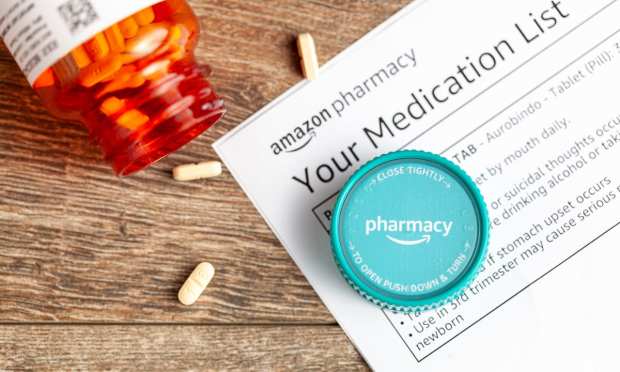Amazon’s Multichannel Bid To Bring ‘Amazon Effect’ To Healthcare

Among the greenfield opportunities beckoning for modernization and digitalization, none beckon quite as brightly as healthcare.
After all, it’s an industry that represents more than 17 percent of U.S. GDP, as measured by the Centers for Medicare and Medicaid Services. And by all accounts it does not run all that smoothly, mired in paper, high deductibles and increasing reliance on patients to foot the bill for healthcare costs. Comparison shopping is to be expected, perhaps, in a world where we are living longer, yes, but we also are more reliant than ever on doctor visits and pharmaceuticals to help keep, well, healthy.
This week, Amazon said it was rolling out two new features to make it easier to find and compare costs tied to prescription drugs. With the Amazon Prime prescription savings benefit, Prime members can search online drug and compare prices for those drugs at Amazon Pharmacy and more than 60,000 pharmacies nationwide. Prime customers can also determine their expected co-pay with their insurance and compare those co-pays against the Amazon price for a medication. The company said in its release that the prescription drug savings benefit is administered by Inside RX.
“The Prime prescription savings benefit saves members up to 80% off generic and 40% off brand-name medications when paying without insurance,” Amazon said, and users can order online for free two-day delivery from Amazon Pharmacy.
The search-and-compare features, we contend, are bids to remove some of the “black box” nature of healthcare, where sticker shock is common, where sometimes we have to juggle medication expenses against other bills, triaging them in a balancing act.
Omnichannel: The New RX For Prescriptions (And Healthcare)?
As for the greenfield opportunity: Amazon noted that only 11 percent of customers shopped online for better prices when faced with higher than anticipated costs for their prescriptions.
Amazon, of course, has been making inroads into healthcare for some time in a goal that might be likened to bringing the “Amazon Effect” to healthcare. In 2018, it acquired PillPack. And in evidence of the cross-channel efforts, reports earlier this week said the eCommerce giant is interested in physical pharmacies (perhaps standalone or housed in Whole Foods). Those reports, in turn, follow March announcements that it will expand its telehealth service, Amazon Care, to employees in all 50 states starting this summer. It also plans to make the service available to other employers later this year. That service, as it stands now, focuses on telehealth consultations and in-home visits from nurses for a fee.
Amazon, it seems, is more determined than ever to shoulder its own push into healthcare on its own terms, with select partnerships that augment the ecosystem already in place. Earlier this year, the joint efforts between Amazon, Berkshire Hathaway and JPMorgan Chase — Haven, which sought to, among other things, make insurance benefits easier to understand — was disbanded. The platform, and the algorithm, the pricing power and the logistics and the last mile all seem, at least in Amazon’s eyes, to be enough to disrupt healthcare.
There is certainly at least some movement toward bringing healthcare more fully into the digital age. As PYMNTS has tracked, the Provider Ranking of Prescription Apps has shown that GoodRX sticks at No. 1, though its battle with Amazon is now more fully joined, on discounts and other ways of streamlining the process of searching for, obtaining and paying for prescription drugs.
